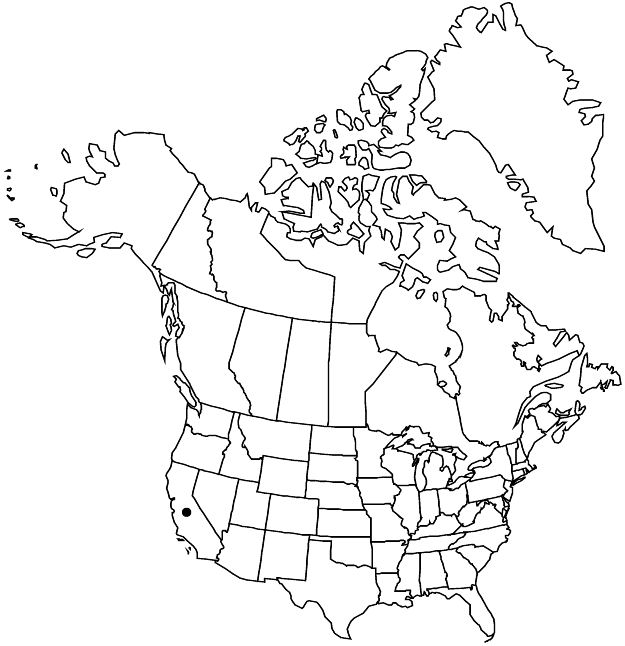Hesperolinon spergulinum
N. Amer. Fl. 25: 86. 1907.
Herbs, 10–30 (–50) cm, glabrous or glabrate; branches from distal nodes, alternate, widely spreading. Leaves alternate; stipular glands absent or minute; blade linear or narrowly oblong, 10–35 × 0.5–2 (–2.5) mm, base flat, not clasping, margins without stalked glands. Inflorescences: cymes monochasial (helicoid), open, internodes long, flowers widely scattered; bract margins without prominent glands. Pedicels 5–15 (–25) mm, 5–25 mm in fruit, pendent in bud, deflexed at 90° angle, slightly bent at apex. Flowers: sepals erect, not reflexed at tip, ovate, 1.5–2.5 (–3.5) mm, equal, margins minutely gland-toothed, surfaces glabrous; petals widely spreading to reflexed, white or pale-pink, usually darker-veined, obovate, 4–7 mm, apex obtuse; cup white, rim petal attachments in indentations; stamens exserted; filaments (3–) 4–5 (–7) mm; anthers pink to red-purple, white-margined, dehisced anthers 1.2–2 mm; ovary chambers 6; styles 3, white, 3.5–7 mm, exserted. 2n = 36.
Phenology: Flowering May–Aug.
Habitat: Chaparral or woodland margins, serpentine soils.
Elevation: 100–1000 m.
Discussion
Hesperolinon spergulinum occurs in the central and southern North Coast Ranges; there are historical reports from Santa Clara County. The pendent buds, a result of the deflexed and sometimes downward-curved pedicel, and the relatively long styles and stamens are distinctive. The petal appendages are relatively well developed in H. spergulinum; the ligule may be as large as 1 mm and hairy.
Selected References
None.
Lower Taxa
"equal" is not a number.
